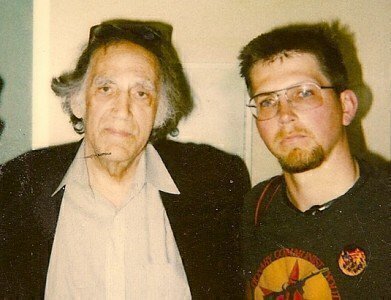In the past week, there have been reports of public American flag burning in isolated protests about Tuesday’s presidential election results. The controversy over the act goes back to another political protest about presidential elections.

On August 22, 1984, Gregory Lee Johnson burned a flag at the Republican National Convention in Dallas in a protest about both presidential candidates that year: Ronald Reagan and Walter Mondale.
Officials there arrested Johnson and convicted him of breaking a state law; he was sentenced to one year in prison and ordered to pay a $2,000 fine. The legal challenges mounted by Johnson led to a Supreme Court decision in his favor, debates in Congress, a second Supreme Court decision, and an “almost” constitutional amendment.
Today, flag burning remains legal as a form of First Amendment protest and it is on the short-list of constitutional amendments that will be proposed in the next Congress, which convenes in early January.
In the current Congress, Senator David Vitter of Louisiana reintroduced a proposed American flag desecration amendment in July 2015. It was sent to the Judiciary Committee, which took no action on the proposal. The last time an anti-flag burning amendment was considered by a full Congress was in 2006, when it failed in the Senate by just one vote after the House easily passed it with a two-thirds majority vote.
However, the bar to any constitutional amendment remains high, with two-thirds of Congress and three-quarters of the states needing to approve any changes to the Constitution. (The Constitution’s Article V also allows for an amendment process by state conventions, which hasn’t been used.)
The Supreme Court case that first established flag burning as a protected First Amendment act was Texas v. Johnson. On June 21, 1989, a deeply divided Court voted 5-4 in favor of Johnson, the protester in Texas. Johnson’s actions, the majority argued, were symbolic speech political in nature and could be expressed even if it upset those who disagreed with him.
Justice William Brennan wrote the majority decision, with Justices Anthony Kennedy, Thurgood Marshall, Harry Blackmun and Antonin Scalia concurring. “Johnson was convicted for engaging in expressive conduct. The State’s interest in preventing breaches of the peace does not support his conviction because Johnson’s conduct did not threaten to disturb the peace,” said Brennan. “Nor does the State’s interest in preserving the flag as a symbol of nationhood and national unity justify his criminal conviction for engaging in political expression.”
Justice Anthony Kennedy, writing a concurrence, spelled out his reasoning succinctly.
“The hard fact is that sometimes we must make decisions we do not like. We make them because they are right, right in the sense that the law and the Constitution, as we see them, compel the result,” Kennedy said. “And so great is our commitment to the process that, except in the rare case, we do not pause to express distaste for the result, perhaps for fear of undermining a valued principle that dictates the decision. This is one of those rare cases.
Chief Justice William Rehnquist dissented, along with John Paul Stevens, Sandra Day O’Connor, and Byron White. In his dissent, Rehnquist said that, “the flag is not simply another ‘idea’ or ‘point of view’ competing for recognition in the marketplace of ideas.”
“I cannot agree that the First Amendment invalidates the Act of Congress, and the laws of 48 of the 50 States, which make criminal the public burning of the flag,” he said.
In reaction to the Johnson decision, which only applied to the state of Texas, Congress passed an anti-flag burning law called the Flag Protection Act of 1989. But in 1990, the Court struck down that law as unconstitutional in a second case, United States v. Eichman.
“If there is a bedrock principle underlying the First Amendment, it is that the Government may not prohibit the expression of an idea simply because society finds the idea itself offensive or disagreeable,” said Justice William Brennan.
Justice John Paul Stevens wrote the dissent in that Eichman decision. “The flag uniquely symbolizes the ideas of liberty, equality, and tolerance -- ideas that Americans have passionately defended and debated throughout our history,” he wrote. “Thus, the Government may -- indeed, it should -- protect the symbolic value of the flag without regard to the specific content of the flag burners' speech.”
The cases remain controversial to the present day. Justice Antonin Scalia voted with the majority in both flag burning cases, and in one of his last public events, he explained his reasoning on the principal of a textual reading of the First Amendment. “If it were up to me, I would put in jail every sandal-wearing, scruffy-bearded weirdo who burns the American flag,” Scalia said at a November 2015 event in Philadelphia. “But I am not king.”
For now, the issue goes to the 113th Congress, which convenes on January 3, 2017 in Washington, D.C. It remains to be seen if a new amendment will make it to a floor vote.
Scott Bomboy is the editor in chief of the National Constitution Center.







